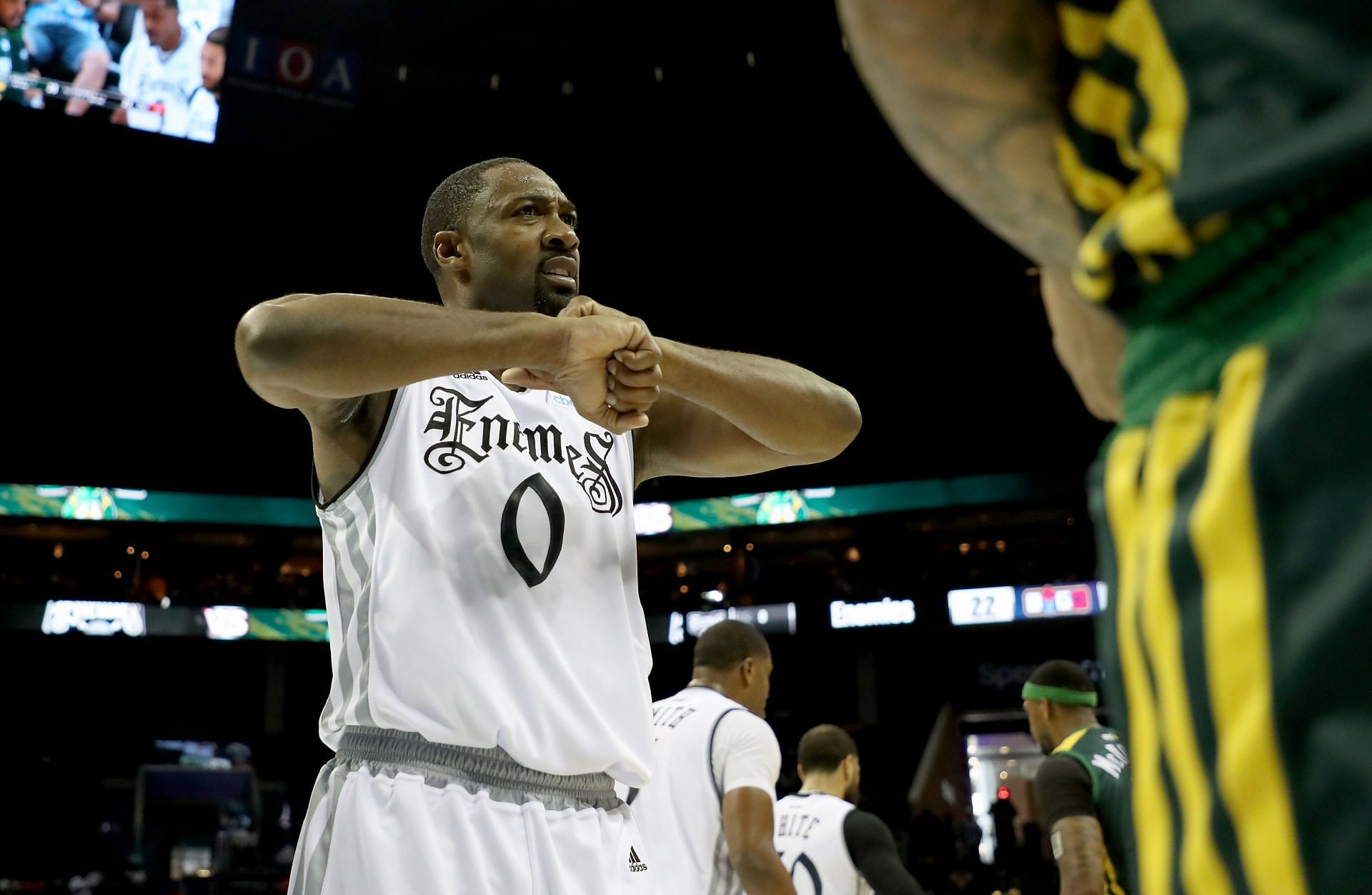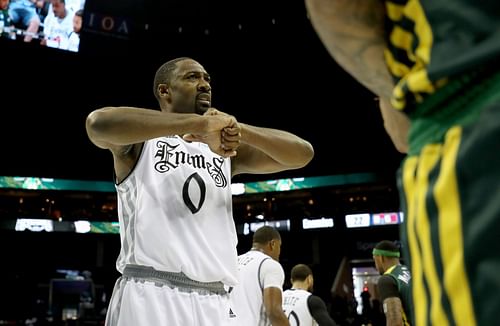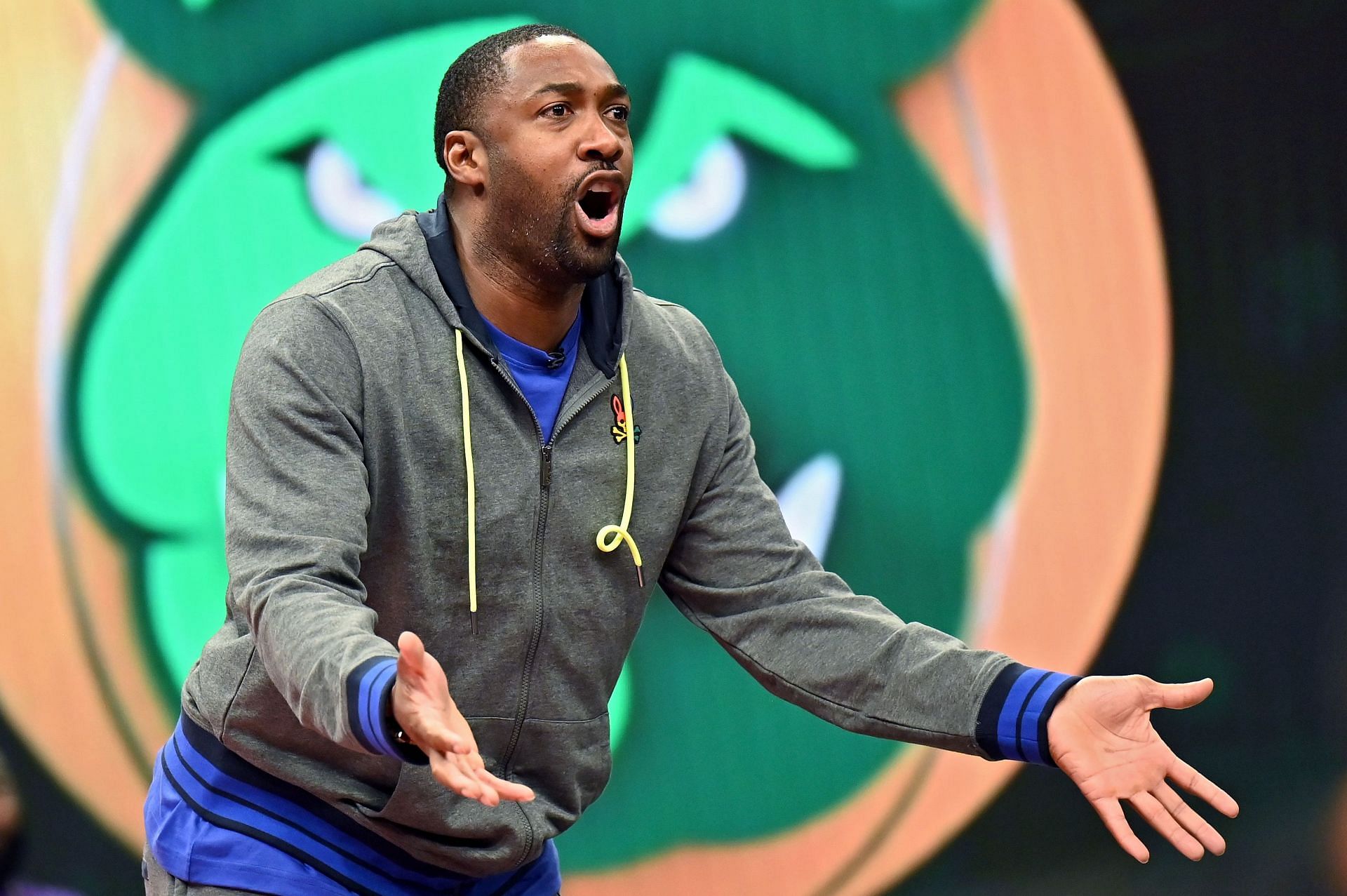
“Damian Lillard, Steph Curry, and all these guys they’re playing the way Gilbert played but when Gilbert did it it was a sin” - Amin Elhassan talks about ‘glorifying’ three-pointers in conversation with Gilbert Arenas

Over the last decade, the NBA has undergone a transformation, no longer favoring hulking bigs who dominate the paint, or pass-first point guards that continually lay the table, something which hurt the career of Gilbert Arenas.
Instead, the league is more skill-based, with undersized guards like Stephen Curry and fundamentally sound wings like Kawhi Leonard, the prized standard.
Mid-range jumpers are now out of fashion, while if you can't hit the three at a 34% or better clip, you're an offensive pariah. Two-way players are the ideal role players, while a guard is expected to beat you off the dribble, stretch the floor with his shooting, and dictate the pace of play with his cutting and movement.
But just because the game has changed, it doesn't mean some of the players from previous eras can't hang in the modern-day game. According to Amin Elhassan, Gilbert Arenas' style of play was perfect for the modern era, but during his time, the media ridiculed his style of play.
"They said Gilbert was bad like he shoots too much, he shoots too many threes, that's what they're glorifying now. Like all the guys, Damian lillard, Steph Curry and all these guys they're playing the way gilbert played but when gilbert did it it was a sin," Elhassan said on a recent episode of the No Chill podcast.
One of the biggest driving factors for the NBA's change in offensive approach beyond the Golden State Warriors dynasty, of course, was the analytical movement. Math quickly became a staple in front offices and coaching rooms, and the value of the three-point shot became idolized - perhaps a little too much.
Arenas went on to say that his understanding of how the game is played has been challenged in recent times, especially when he came up against the legendary Steve Nash.
"I understood, okay, there's shooting guard there's a point guard. Steve Nash, like I'm playing against Steve Nash, I understand he's harder to guard when he is in kill mode. When you look at our battles, I got 54 he got 40. The only reason you're in this game because he decide to score." Arenas said when discussing the difference between his approach and that of a pass-first guard like Steve Nas
Gilbert Arenas' a Victim of The Times

Unfortunately, during the physical era of the NBA, high usage offenses were often saved for centers and shooting guards, which led to players like Arenas being labeled selfish. Of course, in the modern game, we celebrate players who possess that type of skillset. Players like Ja Morant and Cade Cunningham are viewed as franchise cornerstones - but both can get their own shots off whenever they choose.
Ideally, you want all players on the court to be offensive weapons, but also to understand how to manipulate a defense with movement and passing. Arenas could do it all, it's just that his time came too soon, and his status in history took a negative knock because of it.
On the other hand, one could credit Arenas and several other players with being the forefathers of the pace-and-space movement. Because if they weren't strutting their stuff on national television night in and night out, the next generation would never have adopted their approach.